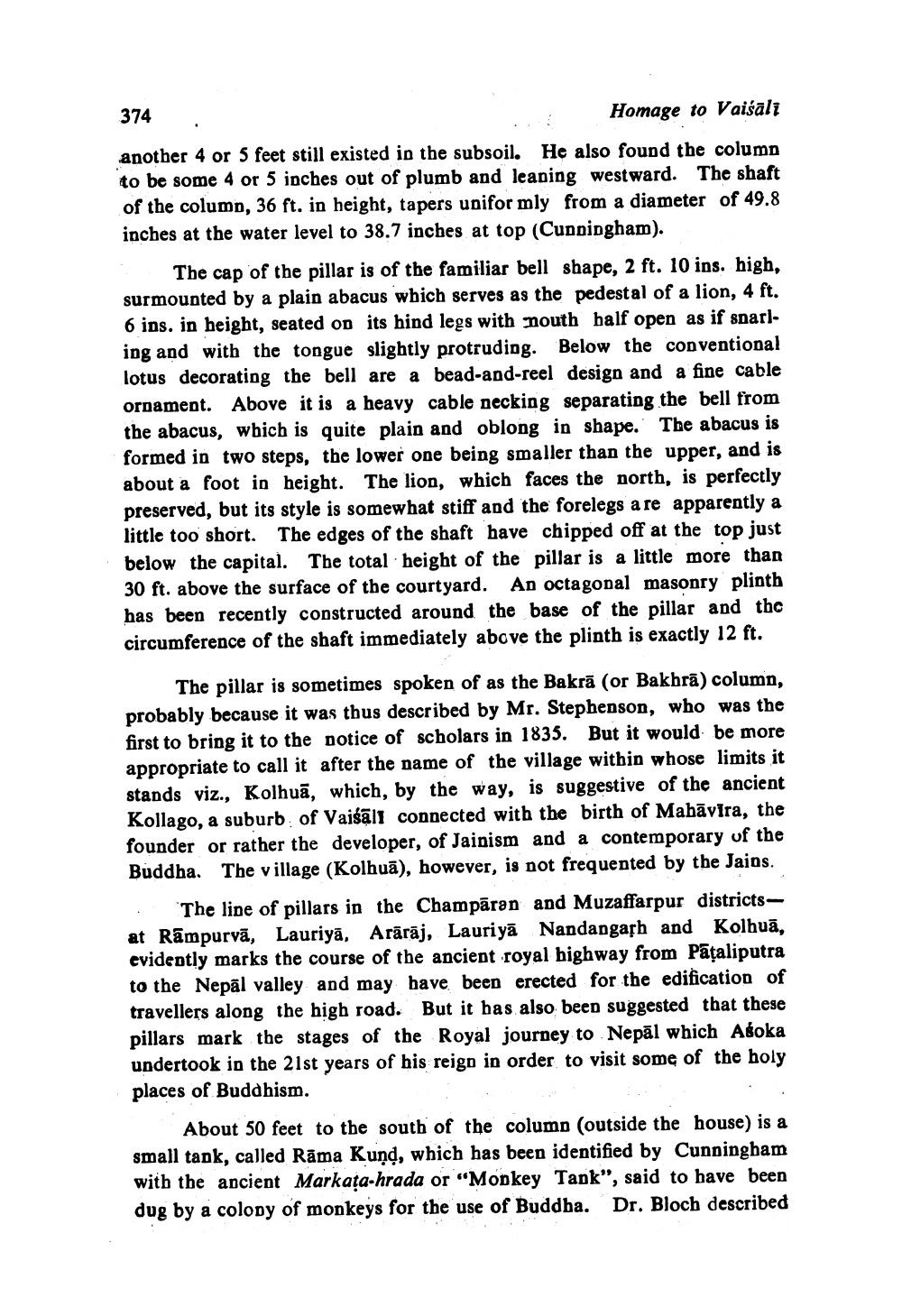________________ 374 Homage to Vaisali another 4 or 5 feet still existed in the subsoil. He also found the column to be some 4 or 5 inches out of plumb and leaning westward. The shaft of the column, 36 ft. in height, tapers uniformly from a diameter of 49.8 inches at the water level to 38.7 inches at top (Cunningham). The cap of the pillar is of the familiar bell shape, 2 ft. 10 ins. high, surmounted by a plain abacus which serves as the pedestal of a lion, 4 ft. 6 ins. in height, seated on its hind legs with nouth half open as if snarling and with the tongue slightly protruding. Below the conventional lotus decorating the bell are a bead-and-reel design and a fine cable ornament. Above it is a heavy cable necking separating the bell from the abacus, which is quite plain and oblong in shape. The abacus is formed in two steps, the lower one being smaller than the upper, and is about a foot in height. The lion, which faces the north, is perfectly preserved, but its style is somewhat stiff and the forelegs are apparently a little too short. The edges of the shaft have chipped off at the top just below the capital. The total height of the pillar is a little more than 30 ft. above the surface of the courtyard. An octagonal masonry plinth has been recently constructed around the base of the pillar and the circumference of the shaft immediately above the plinth is exactly 12 ft. The pillar is sometimes spoken of as the Bakra (or Bakbra) column, probably because it was thus described by Mr. Stephenson, who was the first to bring it to the notice of scholars in 1835. But it would be more appropriate to call it after the name of the village within whose limits it stands viz., Kolhua, which, by the way, is suggestive of the ancient Kollago, a suburb of Vaisali connected with the birth of Mabavira, the founder or rather the developer, of Jainism and a contemporary of the Buddha. The village (Kolhua), however, is not frequented by the Jains. . The line of pillars in the Champaron and Muzaffarpur districtsat Rampurva, Lauriya, Araraj, Lauriya Nandangash and Kolhua, evidently marks the course of the ancient royal highway from Pataliputra to the Nepal valley and may have been erected for the edification of travellers along the high road. But it has also been suggested that these pillars mark the stages of the Royal journey to Nepal which Asoka undertook in the 21st years of his reign in order to visit some of the holy places of Buddhism. About 50 feet to the south of the column (outside the house) is a small tank, called Rama Kund, which has been identified by Cunningham with the ancient Markata-hrada or "Monkey Tapk", said to have been dug by a colody of monkeys for the use of Buddha. Dr. Bloch described




